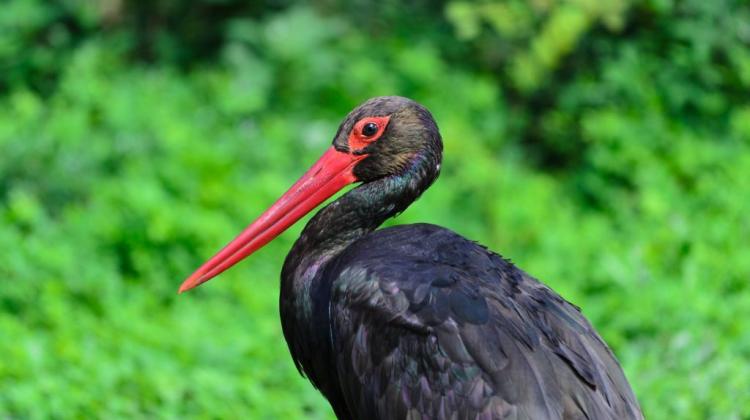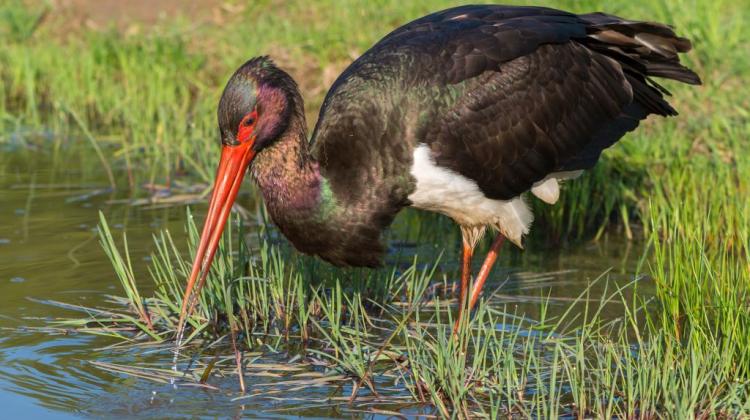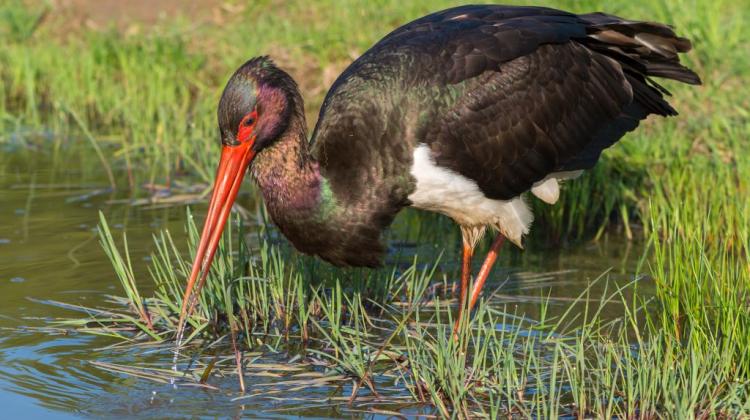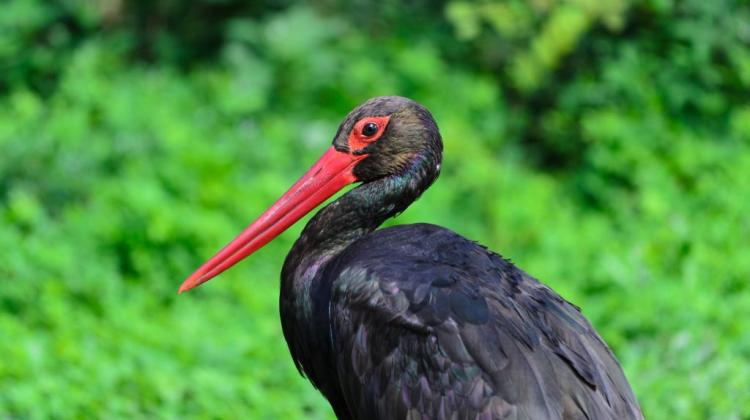Black storks on their way to Africa; most of them have raised their offspring

Departures of black storks to Africa will continue until the end of September. They will return to their nests in the second half of March; nearly a week earlier than white storks - told PAP ornithologist Dr. Marian Stój.
"This year has been better for them than the previous one. They raised much more offspring than last year" - noted the ornithologist.
Their route of migration to wintering countries runs over Subcarpathia. "Black storks begins their autumn journey about two weeks later than their white cousins. They will spend the winter in the north-eastern and eastern Africa. They very rarely cross the equator" - noted the naturalist.
On the journey to Africa, they fly in smaller flocks than white storks. Unlike white storks, they do not always fly over the land. They also use glider flight less often, relying more on the strength of their muscles. "Because of this, on their way to wintering grounds do not need to crowd over the straits, but can cross the Mediterranean in a broader front" - noted Dr. Stój.
They return from wintering countries earlier than white storks. In the spring, the first of them will appear in the nests as early as mid-March.
They are smaller than their cousins. They nest in old beech, fir or mixed forests. "Usually near rivers, streams and ponds, because their main food is fish. But they also prey on insects, amphibians, reptiles and rodents" - the ornithologist explained.
In his opinion, "this year has been quite favourable for black storks, because there were no major weather turbulence". "Therefore, most pairs have raised their offspring, although the low level of water in rivers, and thus decrease in fish population, did not allow them to feed more chicks. The successfully breeding nests had one to three young" - said Dr. Stój.
Body length of black stork is 90-105 cm, with 180-200 cm wingspan and weight of approx. 3 kilograms. They have black plumage, only the chest and belly are white; beak and legs are red.
They are much rarer than white storks; less than 1,500 pairs live in Poland. (PAP)
kyc/ jzi/ mrt/
tr. RL
Przed dodaniem komentarza prosimy o zapoznanie z Regulaminem forum serwisu Nauka w Polsce.


















